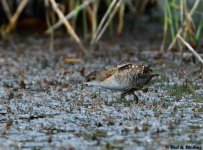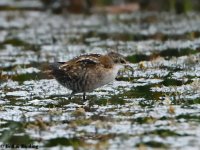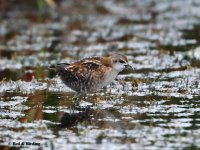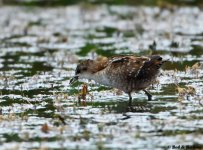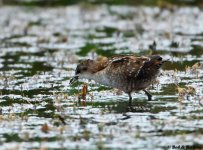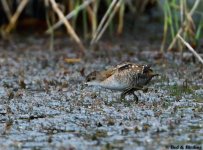While I can appreciate that in the field, this bird may have looked different from other Little Crakes, and conveyed a different jizz, it does not look like a Baillon's to me. I cannot put my finger on precisely why, but I suspect that further investigation of some of the points discussed here (as well as evaluation of some of the features that have not yet been mentioned) will lead to the conclusion that the bird is in fact an odd juvenile Little Crake. Clearly, all is not 'right' at the bird's rear end, with missing tail and tertials (and possibly still stunted primary growth?) so perhaps the impression of the bird being short-arsed should not necessarily be interpreted as pro-Baillon's?
To my eyes, the character of the bird's face, which has a lot to do with that dusky wedge in front of the eye giving a stern expression I associate more with Little (some Baillon's are similar, but not quite the same) and the nature of the white spotting on the upperparts and wing coverts - open, without much indication of the filigree-like detail seen in Baillon's - is also suggestive of Little.
Let's not put this one to bed just yet! A few more photos might help...
Killian






